| PSC 2620: Woody Trees and Shrub | Course Home | Study Materials |
Acer Species Comparisons
This page is intended to help you become more familiar with the different Acer species. Here you can quickly compare the different species to better learn the distinguishing characteristics of each.
Leaf
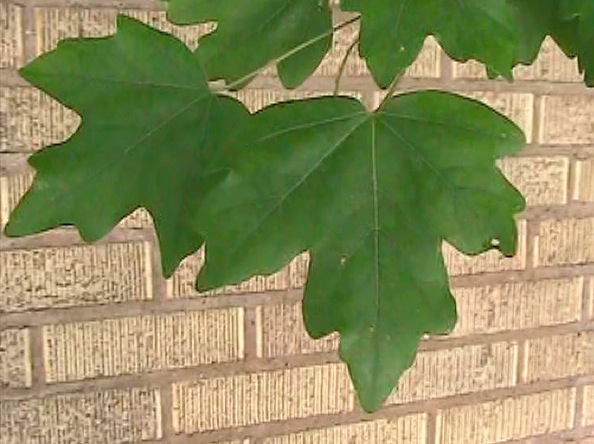 |
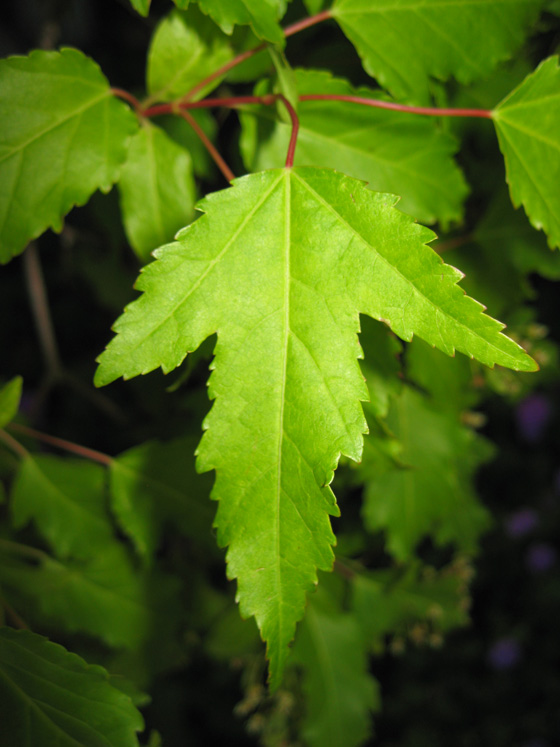 |
| Acer campestre - The petiole is is very long in comparison to the leaf, nearly almost as long as the actual leaf. The leaf has three to five smooth, rounded lobes. | Acer ginnala - The petiole is often red in color. The leaf has three lobes, with the central lobe being very elongated and the margin is serrated. |
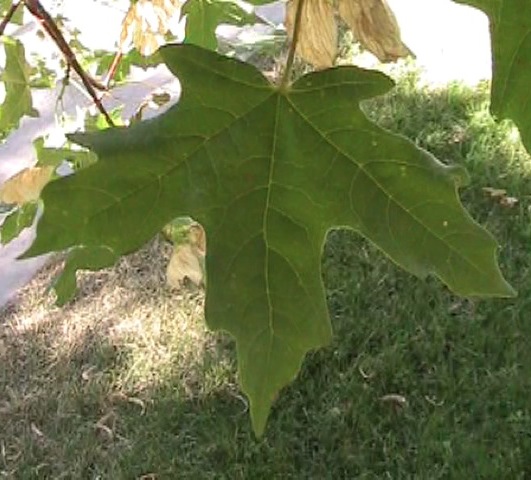 |
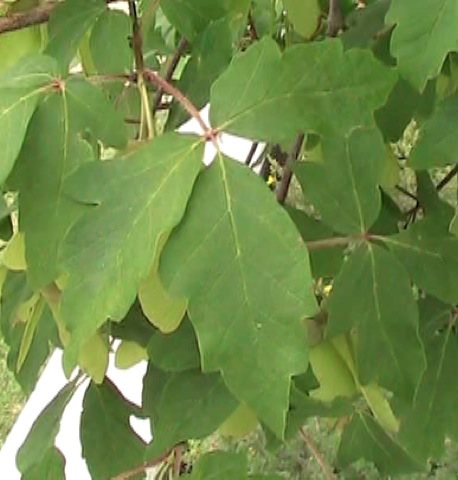 |
| Acer grandidentatum - The leaf has five rounded lobes that are very deeply cut and the bottom two lobes may be quite small. The margin is deeply serrated. Fall color is bright orange. | Acer griseum - The leaf is 3-6 inches long and trifoliate, with each leaflet having rounded serrations. The petiole is very pubescent and 2-3 inches long. |
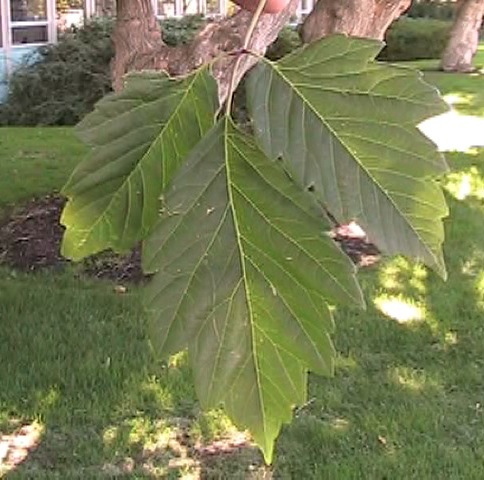 |
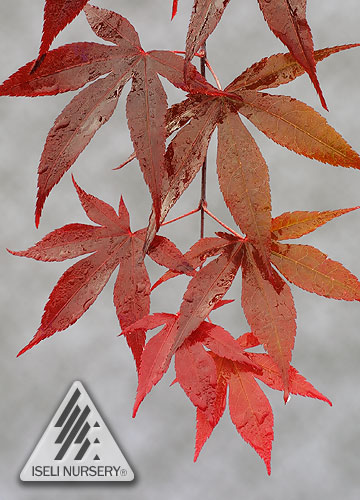 |
| Acer negundo - The leaf is 5-8 inches long and pinnately compound. Each leaflet is ovate and roughly serrated. | Acer palmatum - There is a great deal of variation between the leaves of the different cultivars. They have 5-7 lobes, some cultivars having up to 9. The leaves typically have a finely textured appearance, especially cultivars of the subspecies dissectum which have such extremly cut leaves that they appear lacelike. |
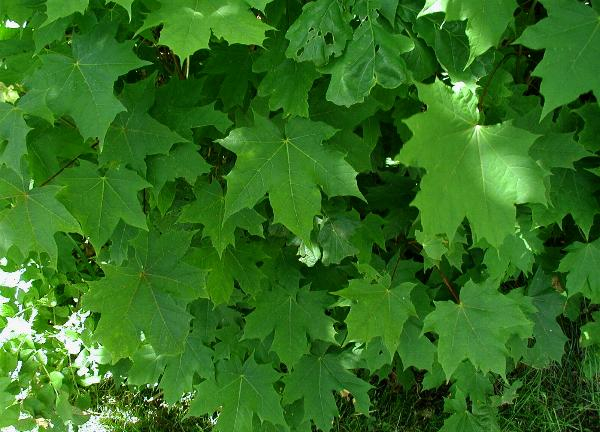 |
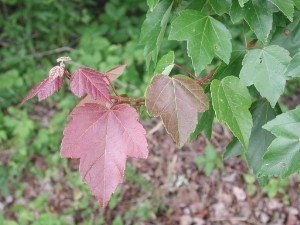 |
| Acer platanoides - The leaf is quite large (5-7 inches) with a long petiole. The leaves have five lobes, resembling the maple leaf pictured on the Canadian flag. The margin of the leaves of the are serrated. Image: Wikipedia.org | Acer rubrum - The leaves are 2-4 inches long with three lobes. The central lobe is elongated. In the spring the new leaves have red overtones, before turning green, and then bright red in the fall. Image: Wikipedia.org |
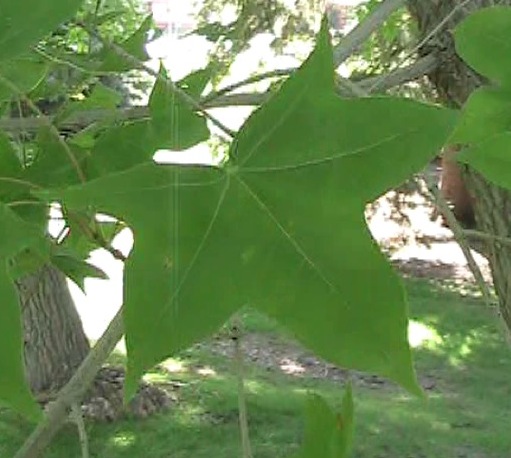 |
|
| Acer truncatum - The leaf is 3-5 inches long with five lobes and a smooth margin. The lobes are triangular and the leaf is very symmetrical. During the fall the leaves turn a mixture of yellows, oranges and reds. |
Samaras
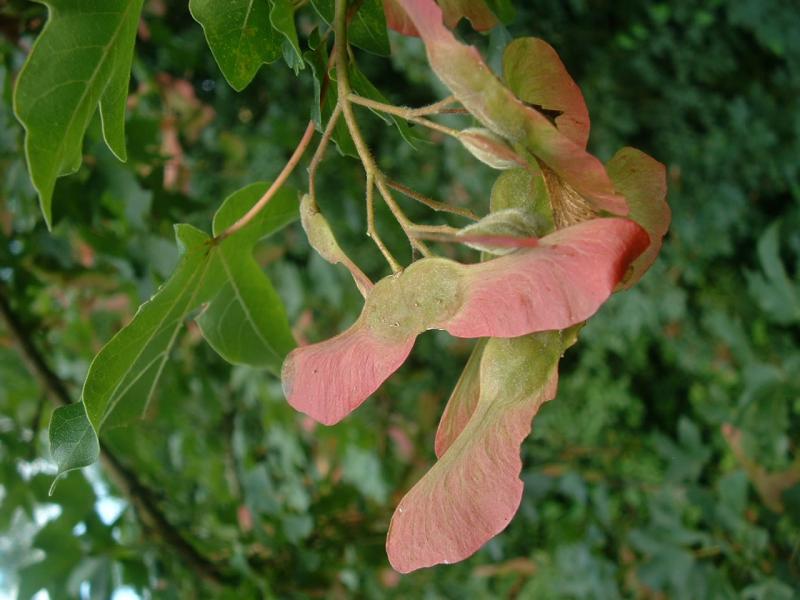 |
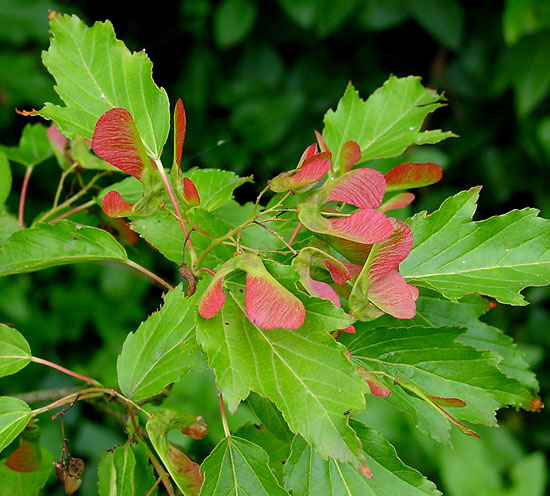 |
| Acer campestre - The samaras are held in a nearly straight line and 1 1/2 inches long. The wings have a pinkish red hue, but they are not as vibrantly colored as the samaras of Acer ginnala, and their arrangement is different also. Image Source: Wikipedia.org | Acer ginnala - The samaras have a bright red hue, though some can be a more rusty brown color. They are very profuse. Easily recognizable from the samaras of Acer campestre because they form a sharp angle. |
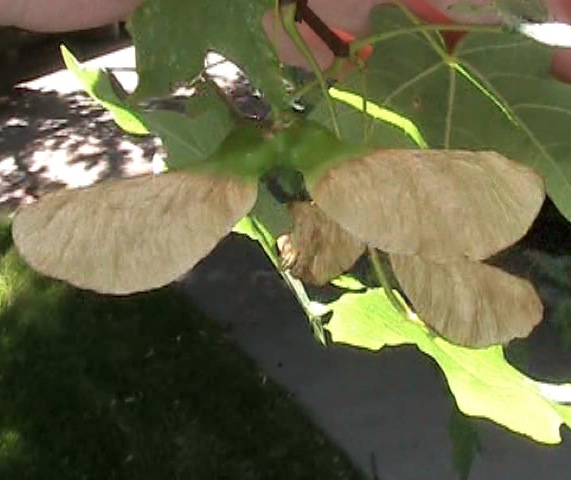 |
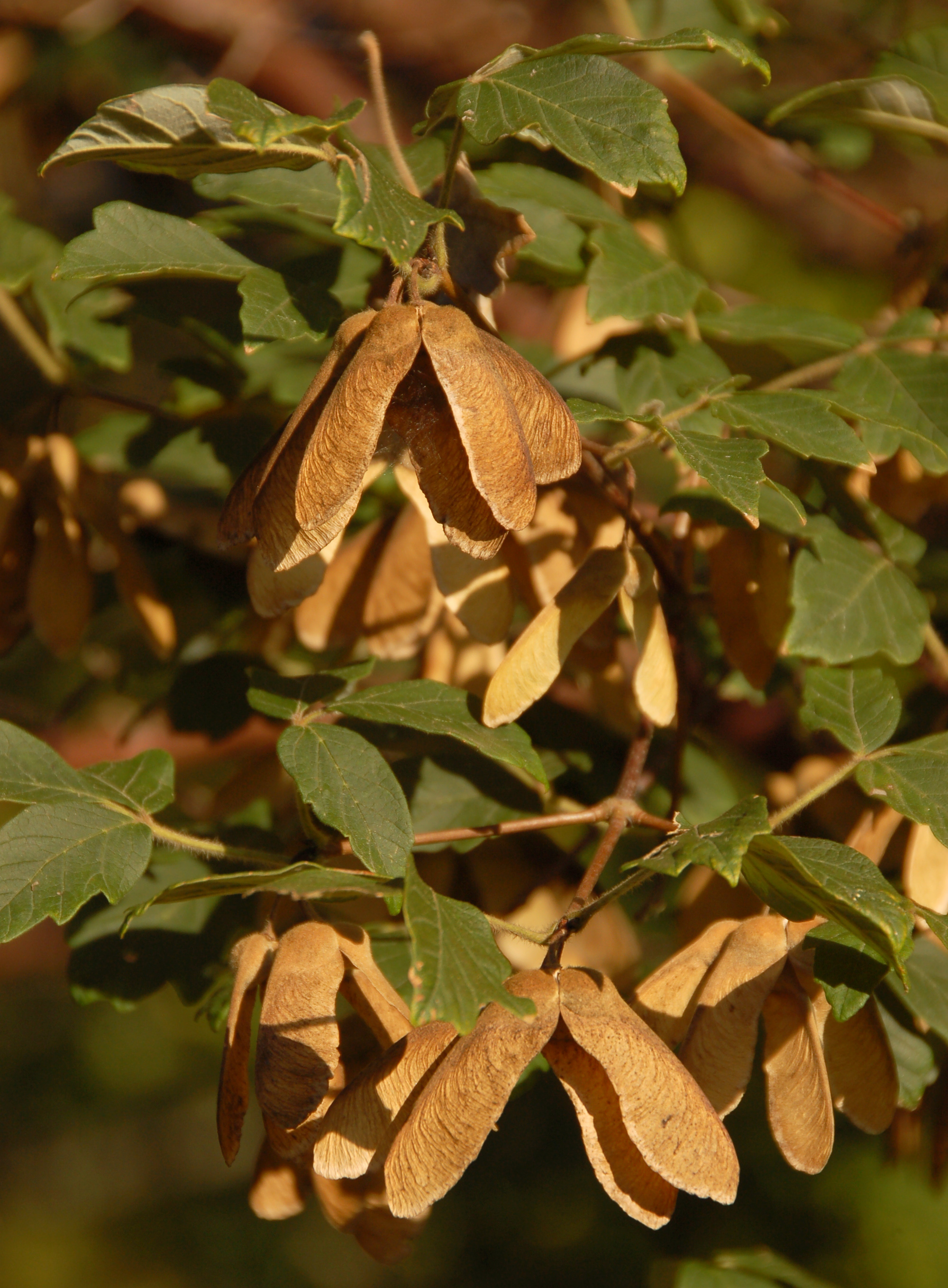 |
| Acer grandidentatum - The wings of the samaras are held in a nearly straight line and they turn a papery brown as the seed matures. The seed is held distinctly above the level of the wings. | Acer griseum - The samaras 1 1/2 inches long and the wings form approximately a 90 degree angle. Like the petioles, they are slightly pubescent. Image Source: Derek Ramsey |
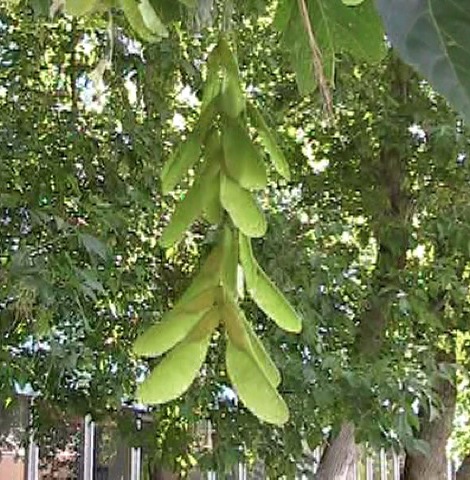 |
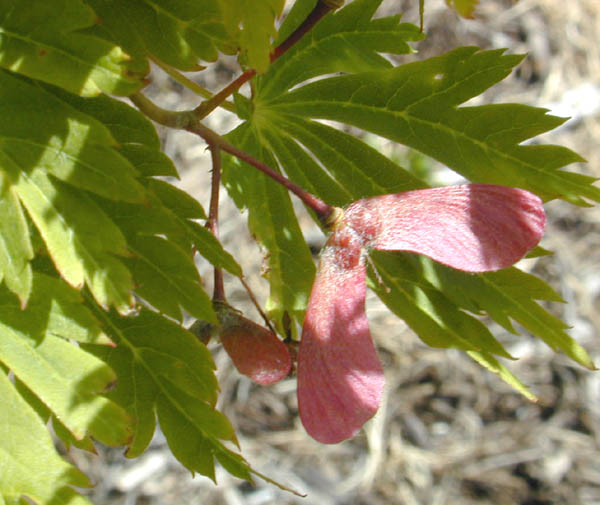 |
| Acer negundo - The smaaras hang in long pannicles, 5-12 inches long. Each pair of seeds are held slightly below a 90 degree angle. | Acer palmatum - Japanse Maples have a great deal of variation in the description of their samaras depending upon the individual cultivar. They tend to be small and are not particularly profuse. |
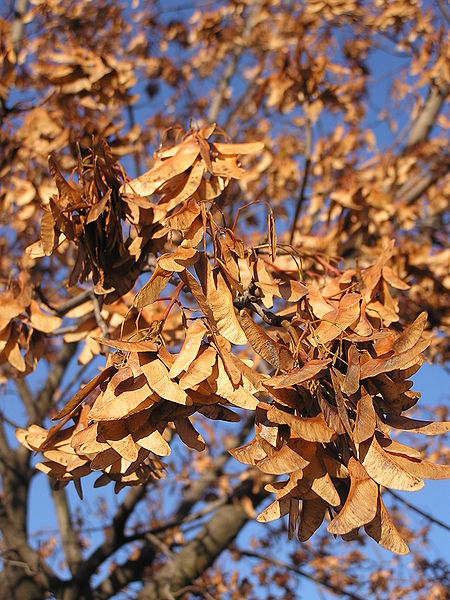 |
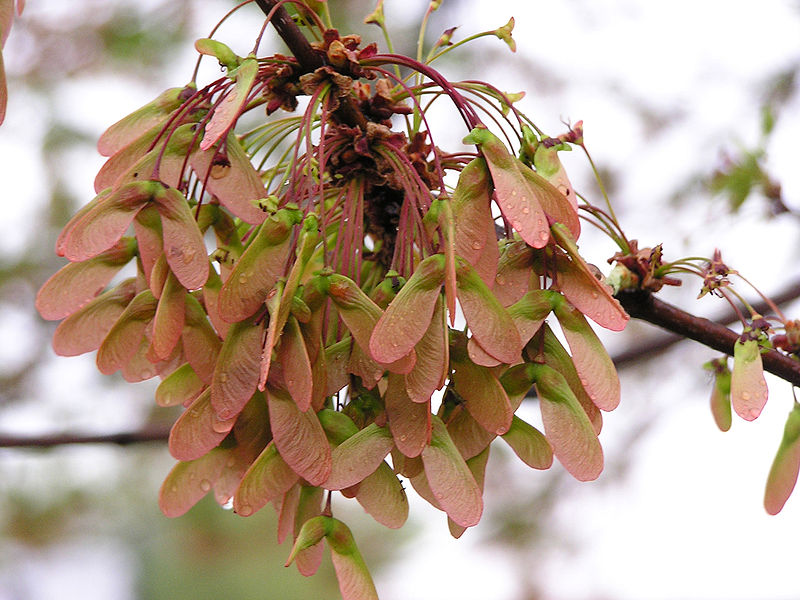 |
| Acer platanoides - The smaras are 2 inches long and very profuse, forming in visible clusters on the tree. The wings are held nearly in a straight line. Image Source: Andrew Butko | Acer rubrum - The samaras are 1 inch long with the wings forming approximately a 45 degree angle. The wings have reddish overtones. Image Source: Sarah Bruce |
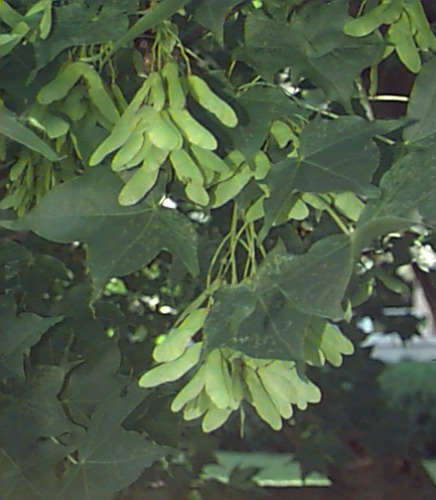 |
|
| Acer truncatum - The samaras are 1 1/4 inches long and form a 90 degree angle. Image Source: University of Connecticut |
Bark
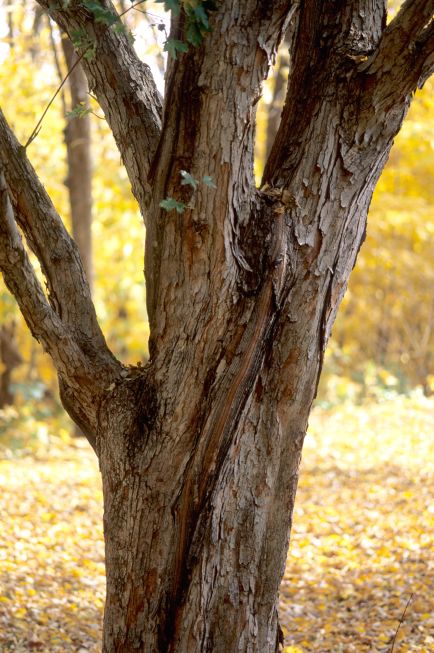 |
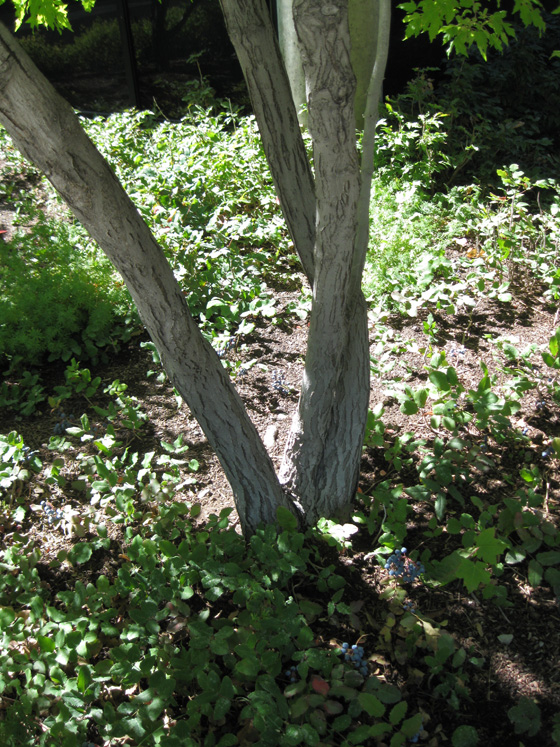 |
| Acer campestre - Young bark has small but distinct ridges, while older bark develops in fissures and plates that exhibit minor exfoliating properties. As the bark matures it develops a noticeable orange undertone to it. Image: Bailey's Nursery | Acer ginnala - The bark is gray brown and smooth, with mature stems developing lightly colored vertical stripes. |
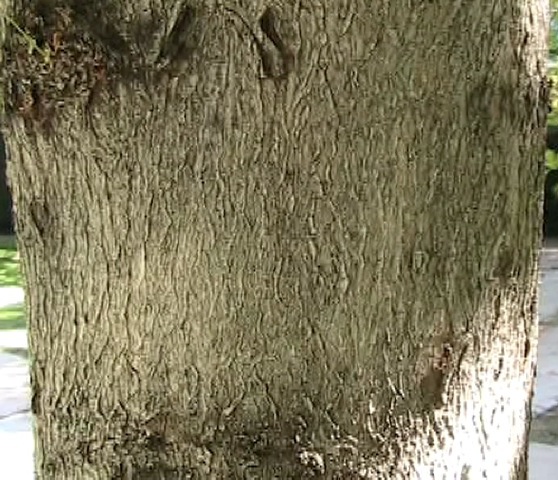 |
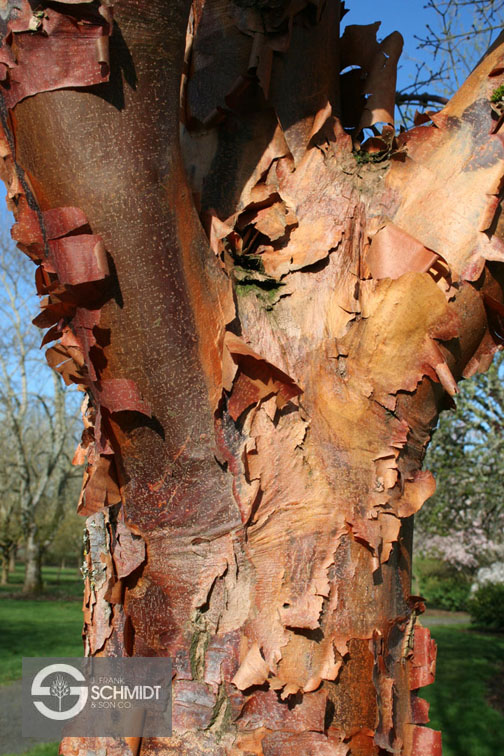 |
| Acer grandidentatum - The bark is light brown in color and has delicate ridges weaving across the surface. | Acer griseum - The bark is a rich cinnamon-brown color and exfoliates in thin sheets. |
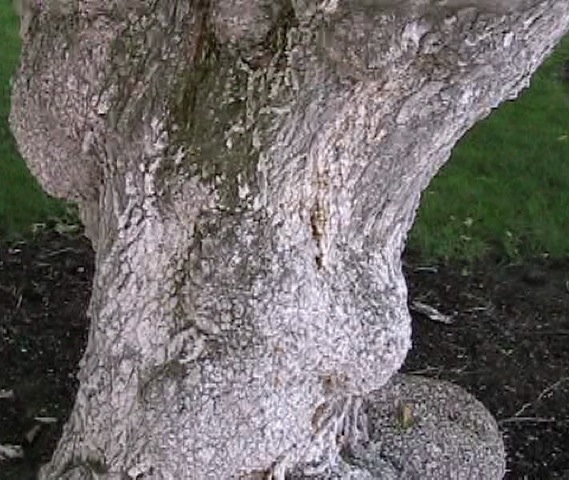 |
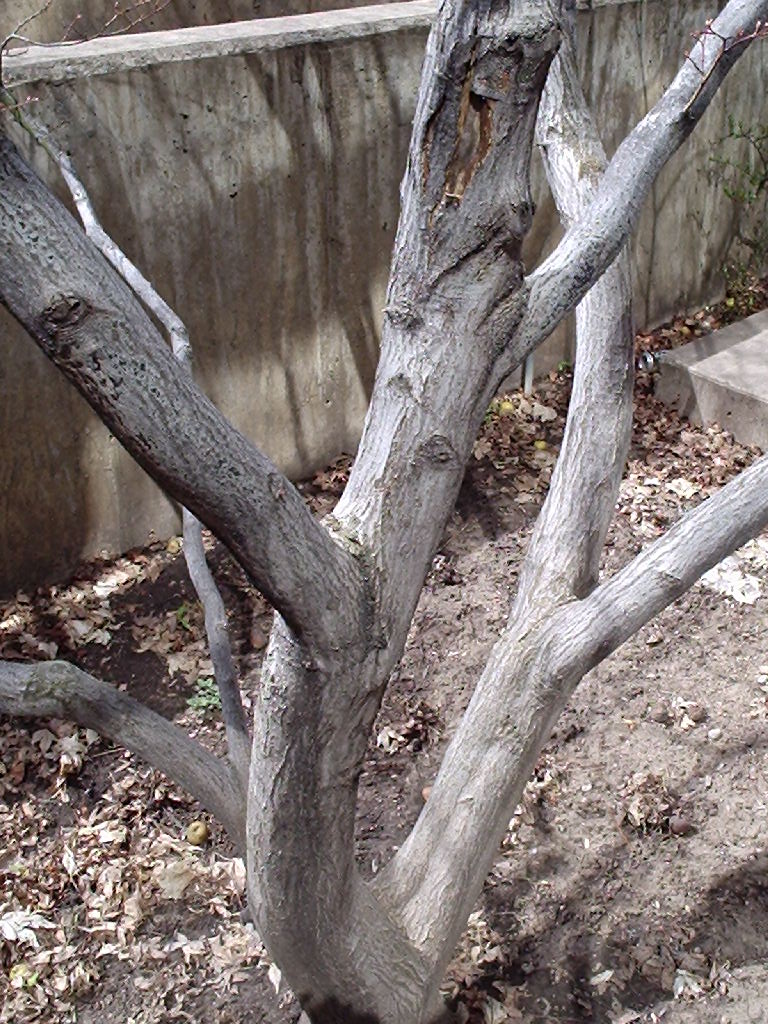 |
| Acer negundo - The bark is gray and is deeply ridged and furrowed. Large burls will form on the trunk of the tree. | Acer palmatum - The bark is usually a light brown color and is smooth. |
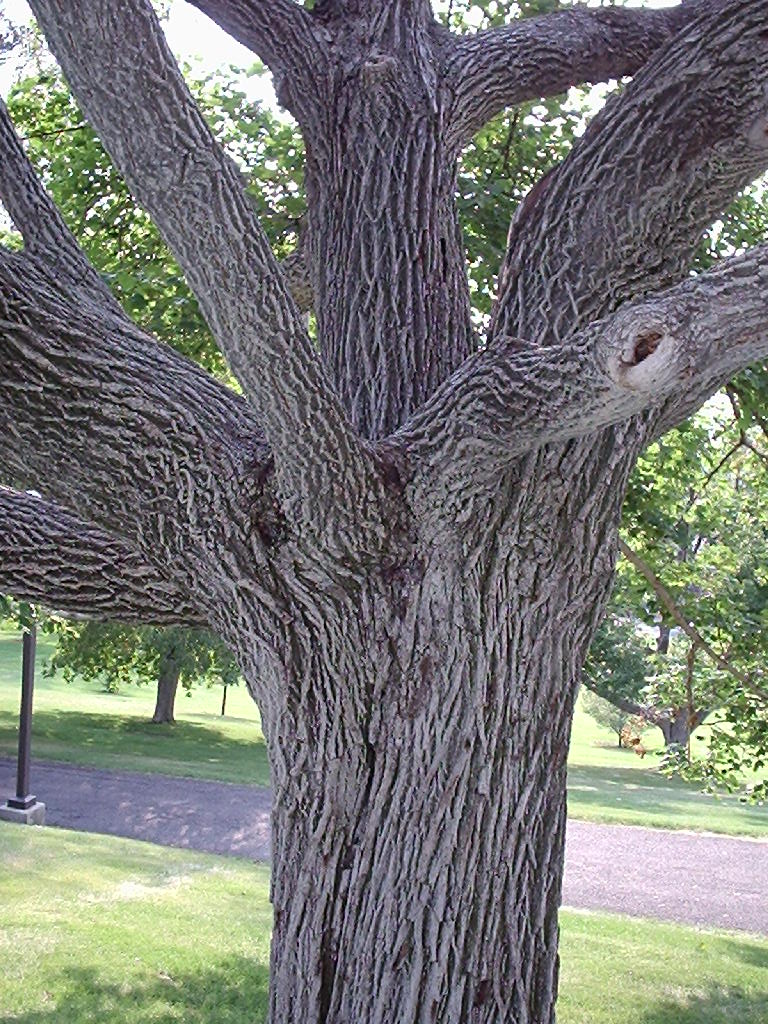 |
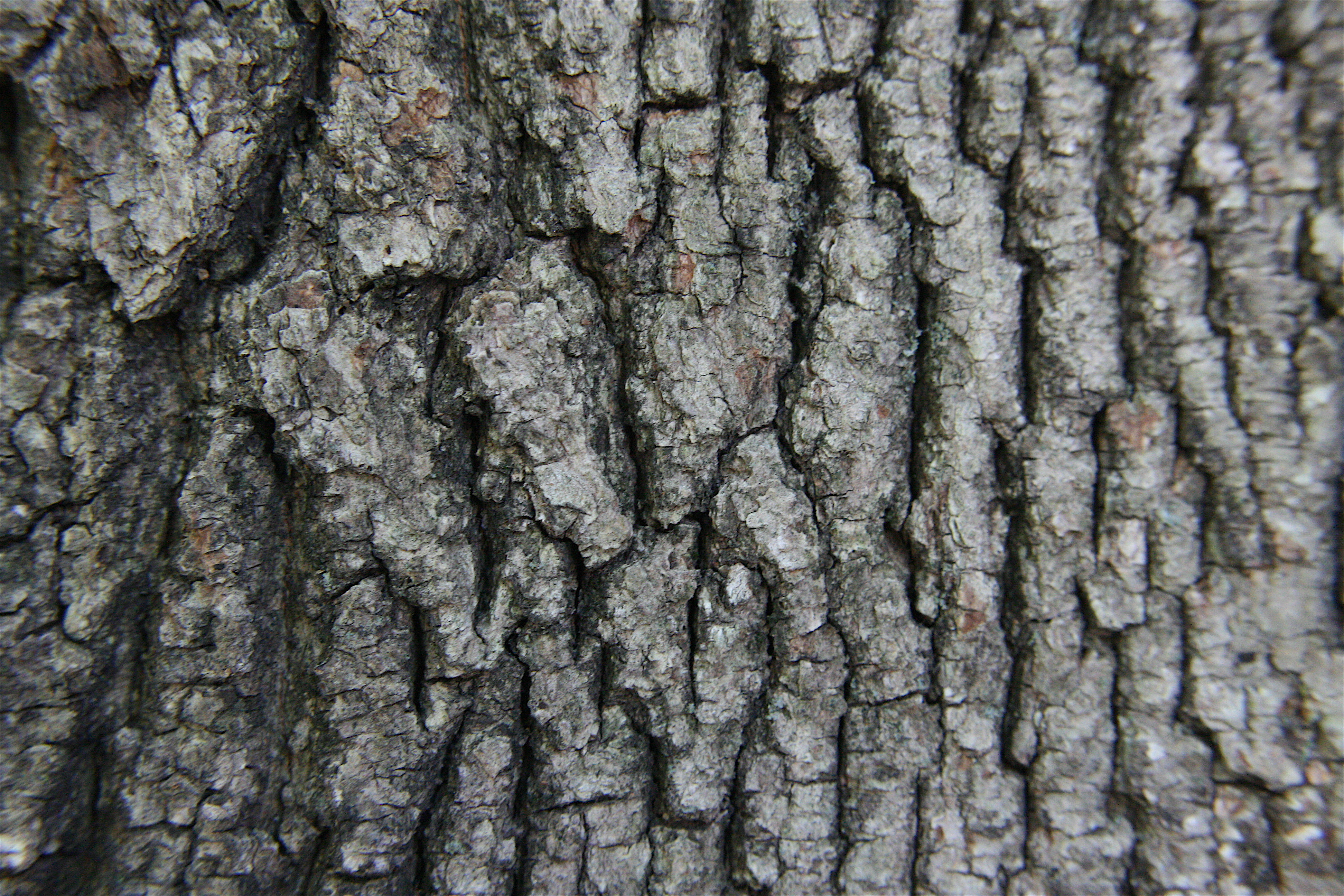 |
| Acer platanoides - The bark is grey-brown in color and has pronounced ridges and furrows. Image: Ben Harris and Mark Dungan | Acer rubrum - The bark is gray-brown and becomes scaley as the tree matures. When the tree is young the bark is smooth and an attractive silvery color. Image: Cody Hough |
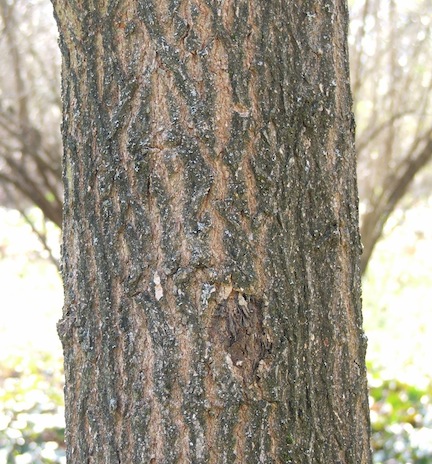 |
|
| Acer truncatum - The bark has modestly sized, but very defined ridges and furrows. When the bark is young it has a purplish overtone. Image: Wikipedia.org |
Size and Form
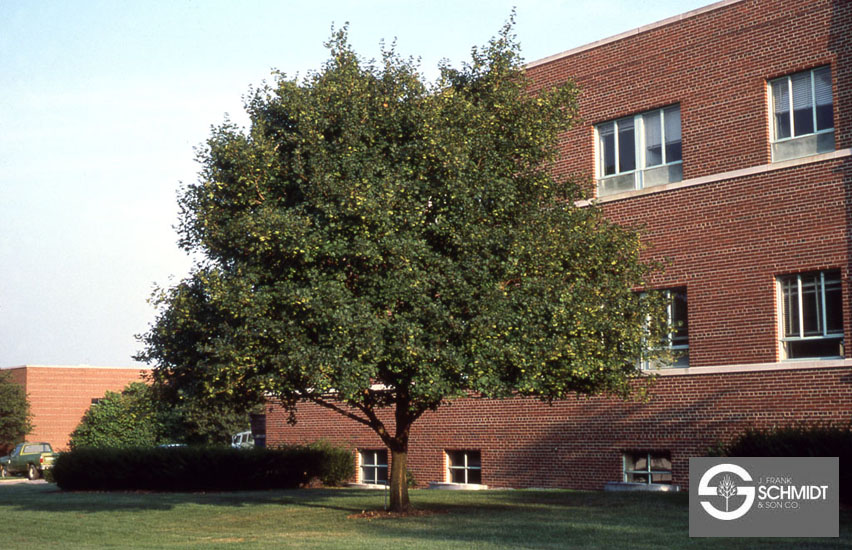 |
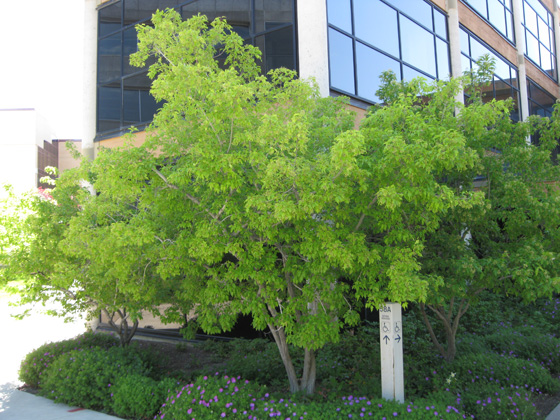 |
| Acer campestre - Forms in clumps with branching starting low to the ground. It grows 25 to 35 feet tall and wide. Image: Bailey's Nursery | Acer ginnala - Usually foud in a multi-stem form and can appear more shrub-like than tree-like. Grove 15-20 feet high and wide. |
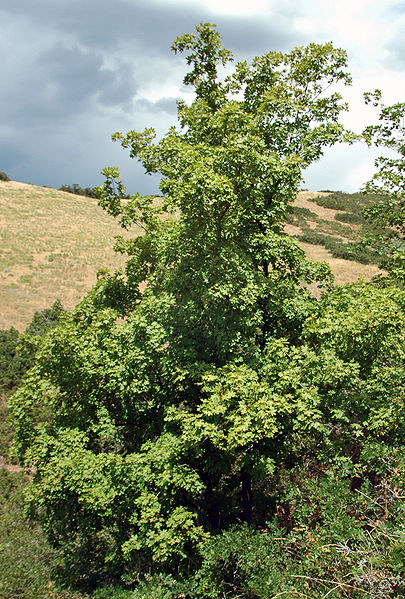 |
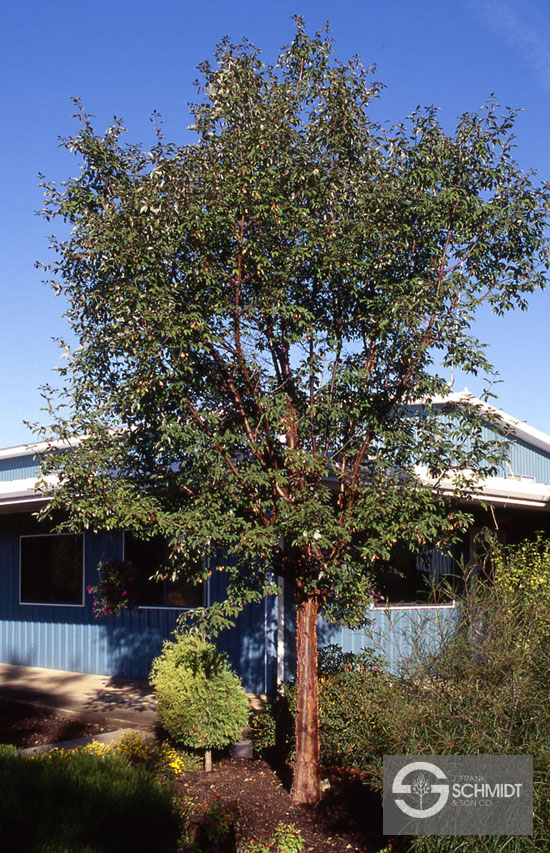 |
| Acer grandidentatum - Native trees grow as large multi-stem or low-branching tree. It can grow 30-40 feet high, but is usually smaller. Image: Cory Maylett | Acer griseum - Slightly uprigth in form, with good branching structure. It can reach 30 feet high, slightly narrower. |
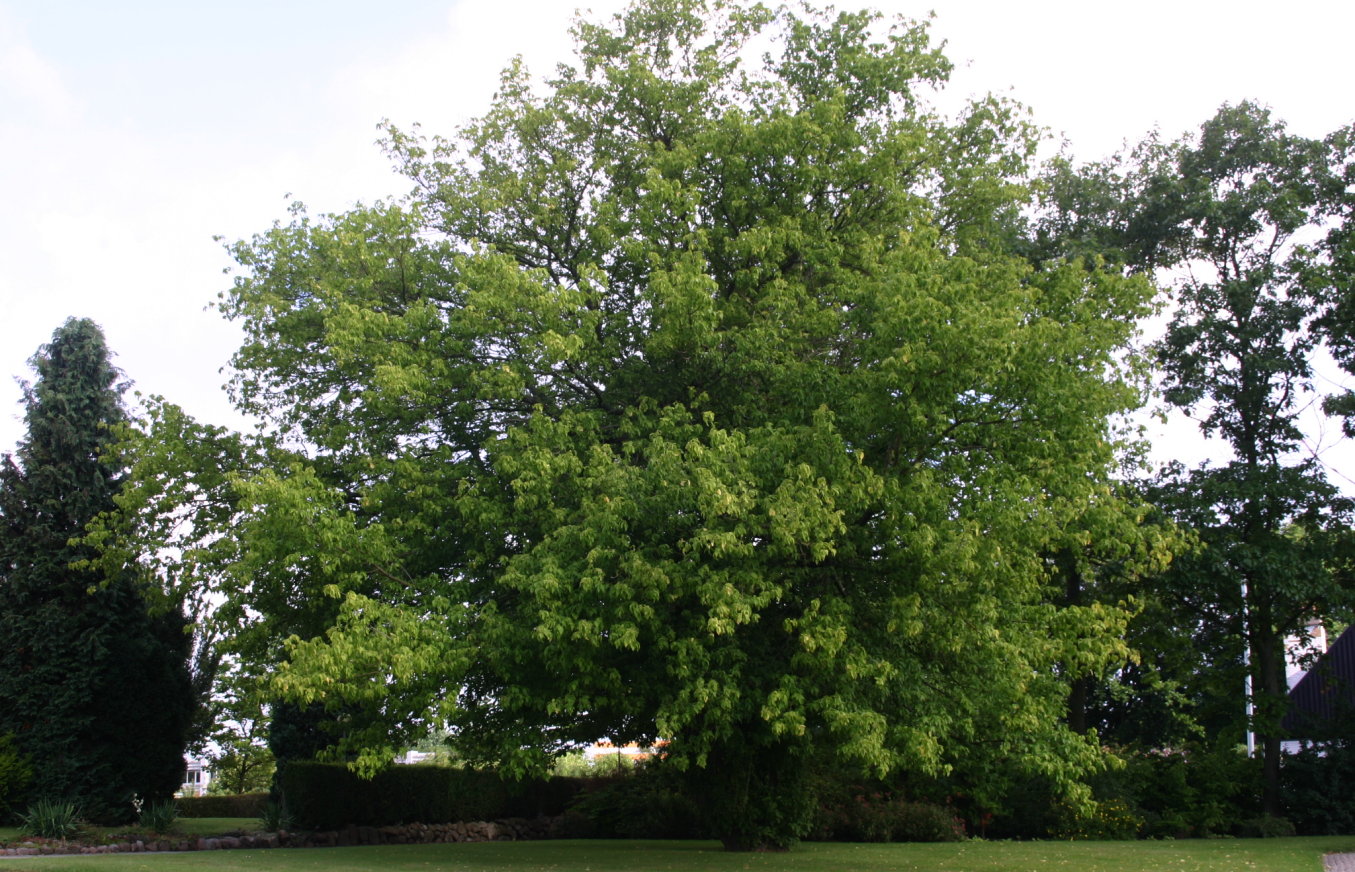 |
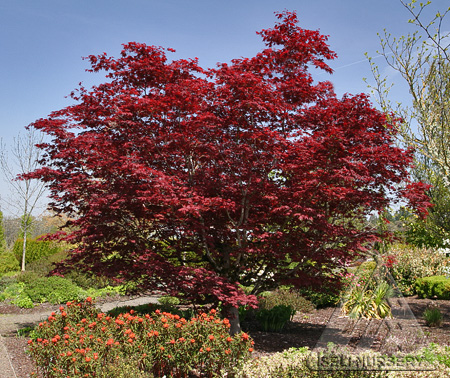 |
| Acer negundo - It has a large, spreading form with a very irregular canopy shape. It will often have damaged branhches. Grows 30-50 feet high and slightly wider. | Acer palmatum - Forms vary considerably according to cultivar. Most regularly found as a multi-stem tree or low-branching single stem tree. Few cultivars grow taller than 25 feet, and many stay much smaller. |
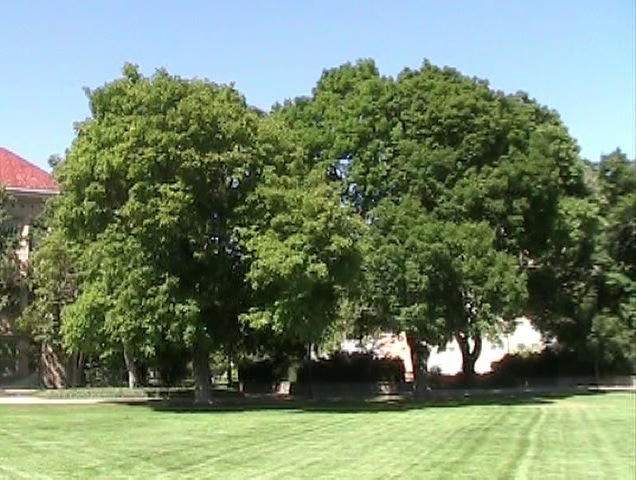 |
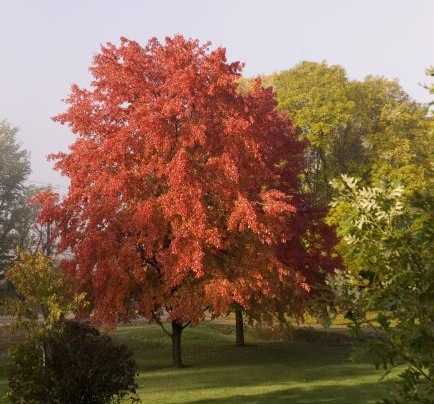 |
| Acer platanoides - Large with a well-rounded form and very dense branching habit. TIt grows 40-60 feet high and wide. | Acer rubrum - Slightly upright in form, it can grow 40-60 feet high. Has a good form to the canopy. Image: Bailey's Nursery |
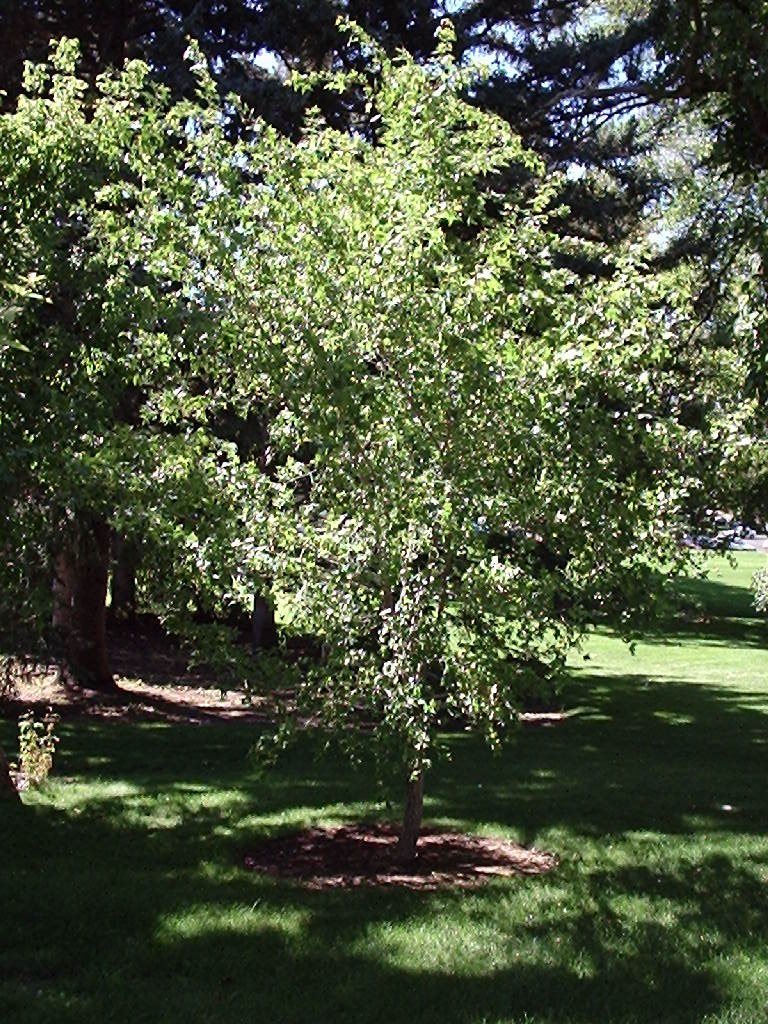 |
|
| Acer truncatum - A small, compact tree with a loosely rounded form. Grows 20-25 feet high and wide. Image: Ben Harris and Mark Dungan |